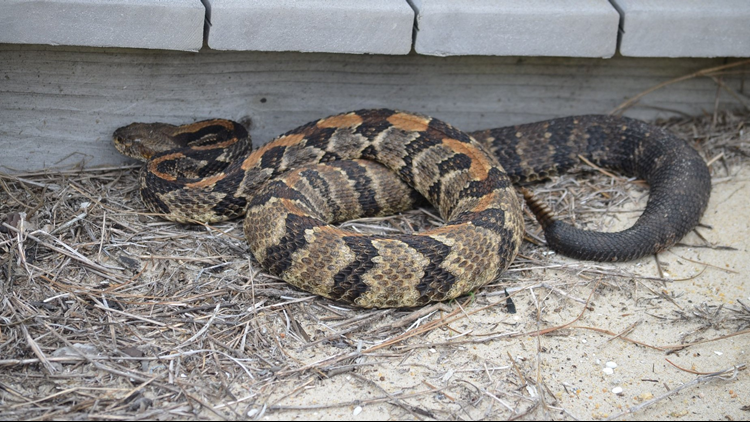Staff at Cape Hatteras National Seashore are warning residents after a Timber (Canebrake) rattlesnake was spotted outside park staff building near the entrance to the Bodie Island Light Station.
Park rangers said the snakes are generally not aggressive. They will, however, strike when threatened or deliberately provoked, but given room, they will retreat.
Most snake encounters occur between the months of April and October when snakes and humans are most active outdoors. The majority of snakebites occur on the hands, feet, and ankles.
To help avoid interactions with snakes, remember the following tips:
-When hiking, stick to well-used trails
-Avoid tall grass, weeds, and heavy underbrush where snakes may hide during the day
-Look at your feet to watch where you step and do not put your foot in or near a crevice where you cannot see
-Do not step or put your hands where you cannot see, and avoid wandering around in the dark
-If a fallen tree or large rock is in your path, step up to it instead of over it, as there might be a snake on the other side
-Avoid approaching any snake you cannot positively identify as a safe species
-If you hear a warning rattle, move away from the area and do not make any sudden or threatening movements in the direction of the snake
DON’T
If bitten by a rattlesnake
DO NOT:
Do not make incisions over the bite wound.
Do not restrict blood flow by applying a tourniquet.
Do not ice the wound.
Do not suck the poison out with your mouth. These methods can very well cause additional harm and most amputations or other serious results of a rattlesnake bite are a result of icing or applying a tourniquet.
DO
Stay calm
Call Dispatch via radio or 911
Wash the bite area gently with soap and water if available
Remove watches, rings, etc., which may constrict swelling
Immobilize the affected area
Keep the bite below the heart if possible
Transport safely to the nearest medical facility immediately.



